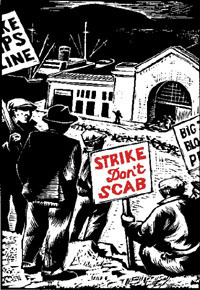|
|
|
|
|
|
No More Deaths In The Waterfront-Australia National Stevedoring Code Of Practice - Sign On NOW
No More Deaths In The Waterfront-Australia National Stevedoring Code Of Practice - Sign On NOW
Australia National Stevedoring Code Of Practice - Sign On NOW
http://www.youtube.com/watch?v=bWniM_qncHU
Published on Jul 3, 2013
The Department of Finance and Deregulation has ordered a Regulation Impact Statement, even though an expert group of stakeholders recently agreed that there was no new cost associated with NSCOP and, as a consequence, Safe Work Australia agreed to release the code for public comment.
"DP World and QUBE are trying to kill a code that will save lives on the waterfront, at the same time that most responsible stevedoring companies have accepted the code," MUA Assistant National Secretary Warren Smith said.
"We are surprised that the Office of Best Practice Regulation would fall for a false campaign by two renegade companies that are out of step with the industry.
"We need to protect workers in an industry where workers are 14 times more likely to die on the job."
Hutchison and Patrick, two of the leading stevedores, support the code and have confirmed that there is no cost involved with its implementation.
The MUA has refuted the outlandish statements being promoted by DP World and QUBE.
MYTH: There is no need for a safety code for stevedoring.
FACT: The rates of death and injury in stevedoring have reached crisis levels. During the last six years alone, six workers were killed on Australia's wharves,[1] with an average death rate of 14.3 workplace deaths per 100,000 workers.[2]
Other Australian industries do not suffer anywhere near this level of carnage. The construction industry, for example, had a workplace death rate of 2.8 per 100,000 workers in 2010-11.[3] Meanwhile, the average across the Australian workforce is just 1.05 workplace fatalities per 100,000 workers.[4]
MYTH: The code contains additional costs (a minority section of the industry have made outlandish and unsubstantiated claims about the cost of the code).
FACT: Safe Work Australia has made it clear that the draft code of practice imposes no new costs on industry. Codes of practice provide practical guidance about how to comply with existing law. It only reflects existing legislative requirements. It imposes no new regulatory burden.
MYTH: The draft is 'excessively prescriptive'.
FACT: The code is advisory in nature. It suggests ways to handle risks in the workplace to comply with existing law. It uses words such as "should" or "may" to denote recommended actions.
MYTH: One of the more outlandish claims is that the code contains new rules that mandate an extra person on every vessel for every lift.
FACT: The code is identical to existing marine orders. A crane safety observer (known in the industry as a hatchman) is only required when the crane driver cannot see the load.
This has always been the case under AMSA regulations. This has not changed. The code contains identical wording to the existing rules.
MYTH: The code blurs jurisdiction between Commonwealth shipping regulator AMSA, and state and territory work safety regulators.
FACT: Stevedoring has always been an area of concurrent jurisdiction between the Commonwealth shipping regulator AMSA and state health and safety regulators.
There is nothing new about this. It is well understood in the industry. For this reason, the states and AMSA have struck MOUs so they can work together effectively.
Maritime Union Of Australia (MUA)
http://www.mua.org.au/
Australian Council Of Trade Union (ACTU)
http://www.actu.org.au/
International Transport Workers' Federation (ITF)
http://www.itfglobal.org/
International Trade Union Confederation (ITUC)
http://www.ituc-csi.org/
Filmed, edited and produced by Jamie McMechan Maritime Union Of Australia - Film Unit.
-

- Log in to post comments
- Printer-friendly version



